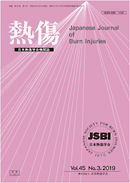Volume 49, Issue 5
Displaying 1-5 of 5 articles from this issue
- |<
- <
- 1
- >
- >|
Review
-
2023Volume 49Issue 5 Pages 235-241
Published: December 15, 2023
Released on J-STAGE: December 15, 2023
Download PDF (2092K) -
2023Volume 49Issue 5 Pages 242-251
Published: December 15, 2023
Released on J-STAGE: December 15, 2023
Download PDF (1735K)
Case Report
-
2023Volume 49Issue 5 Pages 252-256
Published: December 15, 2023
Released on J-STAGE: December 15, 2023
Download PDF (1615K) -
2023Volume 49Issue 5 Pages 257-262
Published: December 15, 2023
Released on J-STAGE: December 15, 2023
Download PDF (1466K)
Rapid Communications
-
2023Volume 49Issue 5 Pages 263-267
Published: December 15, 2023
Released on J-STAGE: December 15, 2023
Download PDF (601K)
- |<
- <
- 1
- >
- >|
